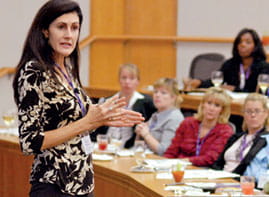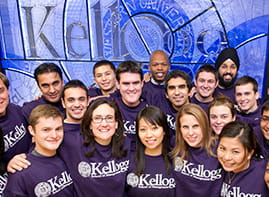9/30/2015 -
Note: This story will appear in the Fall/Winter 2015 issue of Kellogg magazine.
While diversity and inclusion initiatives have become a mainstay within many companies, the choice to hire one candidate over another still comes down to who the hiring manager likes the most. Or rather, with whom they prefer to work.
Lauren Rivera and
Nicholas Pearce have made a career of researching that bias. An associate professor of management and organizations, Rivera’s research focuses on hiring and social inequality. Pearce, a clinical assistant professor of management and organizations, works to get “to the bottom of a puzzle around what helps organizations grow,” he said.
Recently, Rivera and Pearce spoke with
Kellogg on hiring and how bias comes into play:
Why do managers skew toward hiring a particular type of applicant?
Rivera: Hiring managers think they’re hiring based on talent, but when left to their own devices, they tend to define talent in their own image. People are looking for employees who will succeed and thrive, but our views of those people are skewed by cognitive biases and stereotypes that make it hard to see talent that’s different from our own.
Pearce: People tend to esteem and prefer others who share social identities in common with them, like race, religion, or gender. This bias can cause hiring managers to confuse how similar an individual is to them with how well an individual will perform. This is especially true in organizations that lack diversity in the management ranks, where it is easy to reach the false conclusion that the only people who have what it takes to succeed in that environment are the type of people who are already there. Such misguided thinking promotes exclusion.
How can job applicants combat hiring bias?
R: It’s hard to prescribe one strategy that will work all the time because you may not know who is interviewing you or evaluating your resume until you’re in the moment. But you should do due diligence before the interview and try to find out something about your interviewer and draw upon commonalities that you may share. If you know about your interviewer in advance, you can highlight things in the resume that resonate with them.
P: Hiring bias can be difficult to spot by an individual jobseeker, but being aware of the stereotypes that are likely against you when you submit your resume or walk in the door for an interview can be an important first step. For applicants who lack observable similarity to their interviewers, I would suggest trying to establish common ground early in the conversation by exploring shared values, interests, or experiences that can serve as social glue to signal their trustworthiness and potential for success in the organization.
Is there a benefit for managers to hire dissimilar applicants?
R: A lot of major law firms only hire people from the top 10 or 20 law schools with the idea that if a candidate didn’t go to those schools, they won’t be able to cut it. But there’s evidence to suggest that graduates from most elite law schools are more dissatisfied on the job and want to leave very early on. So sometimes, our lay theories on what makes a good hire are just theories.
P: Potentially. Diversity of functional expertise confers clear benefits when it comes to performing complex tasks, but many organizations struggle with whether the benefits of social diversity are worth the pain. Diverse hires often provide fresh perspectives, which can facilitate sharper decision-making and more innovative problem solving, sometimes at the expense of comfort and social cohesion. At the same time, hiring diverse talent without ensuring that there is an organizational ecosystem to support their success can be counterproductive.
Related reading:






